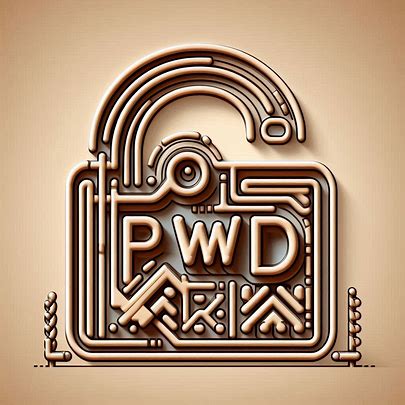Table of contents
Understanding the Full Form of UPS: Unified Pension Scheme
In the realm of financial security and retirement planning, the term “UPS” often surfaces. Although many people might recognize UPS as an abbreviation for Uninterruptible Power Supply, in the context of Indian governance and social security, UPS full form refers to the Unified Pension Scheme. This scheme, initiated by the Prime Minister’s Office (PMO) under the leadership of PM India, aims to streamline and unify various pension schemes to ensure a secure and dignified retirement for all citizens.

What is the Unified Pension Scheme?
The Full Form of UPS (Unified Pension Scheme) is a comprehensive initiative designed to consolidate multiple pension schemes under one umbrella. This unification simplifies the process for beneficiaries, ensuring that they receive their pensions without the hassle of navigating through different schemes. The primary goal is to provide a seamless and efficient pension system that caters to the needs of the elderly, disabled, and other vulnerable sections of society.
Key Features of the Unified Pension Scheme
- Simplification and Unification: The UPS merges various existing pension schemes into a single, unified system. This reduces administrative overhead and makes it easier for beneficiaries to access their pensions.
- Direct Benefit Transfer (DBT): The scheme leverages the DBT mechanism to ensure that pensions are directly credited to the beneficiaries’ bank accounts, minimizing delays and leakages.
- Inclusivity: The UPS is designed to be inclusive, covering a wide range of beneficiaries, including the elderly, disabled, widows, and other vulnerable groups.
- Transparency and Accountability: The scheme incorporates robust monitoring and evaluation mechanisms to ensure transparency and accountability in the disbursement of pensions.
- Digital Integration: The UPS is integrated with digital platforms to facilitate easy registration, verification, and disbursement processes.
Cabinet approves Unified Pension Scheme
| Feature | Details |
|---|---|
| Assured Pension | 50% of the average basic pay drawn over the last 12 months prior to superannuation for a minimum qualifying service of 25 years. Proportionate for lesser service periods up to a minimum of 10 years of service. |
| Assured Family Pension | 60% of the pension of the employee immediately before her/his demise. |
| Assured Minimum Pension | ₹10,000 per month on superannuation after a minimum of 10 years of service. |
| Inflation Indexation | Applies to assured pension, assured family pension, and assured minimum pension. Dearness Relief based on the All India Consumer Price Index for Industrial Workers (AICPI-IW), similar to service employees. |
| Lump Sum Payment at Superannuation | 1/10th of monthly emoluments (pay + DA) as on the date of superannuation for every completed six months of service. This payment will not reduce the quantum of assured pension. |
This table provides a concise summary of the salient features of the Unified Pension Scheme (UPS) as approved by the Union Cabinet.
Benefits of the Unified Pension Scheme
The Unified Pension Scheme offers several benefits to its beneficiaries:
- Ease of Access: By consolidating multiple schemes, the UPS simplifies the process for beneficiaries, making it easier for them to access their pensions.
- Timely Disbursement: The use of DBT ensures that pensions are disbursed in a timely manner, reducing the financial stress on beneficiaries.
- Reduced Corruption: The digital integration and direct transfer mechanisms reduce the scope for corruption and ensure that the benefits reach the intended recipients.
- Enhanced Coverage: The scheme aims to cover all eligible beneficiaries, ensuring that no one is left out of the social security net.
Implementation and Challenges
The implementation of the Unified Pension Scheme involves several steps, including the identification of beneficiaries, integration of existing schemes, and setting up of digital platforms for seamless operations.
- Data Integration: Integrating data from various existing schemes into a unified system can be complex and time-consuming.
- Awareness and Outreach: Ensuring that all eligible beneficiaries are aware of the scheme and know how to register can be challenging, especially in remote and rural areas.
- Technical Infrastructure: Setting up and maintaining the necessary digital infrastructure to support the scheme requires significant investment and technical expertise.
The Role of PMO and PM India
The Prime Minister’s Office (PMO) and PM India play a crucial role in the successful implementation of the Unified Pension Scheme. Their leadership and commitment to social security ensure that the scheme receives the necessary support and resources for effective execution. The PMO oversees the coordination between various government departments and agencies involved in the scheme, ensuring a unified approach to pension disbursement.
Future Prospects
The Unified Pension Scheme is a significant step towards ensuring financial security for all citizens, especially the elderly and vulnerable sections of society. As the scheme evolves, it is expected to incorporate more features and benefits, further enhancing its reach and impact. The government’s focus on digital integration and transparency will continue to drive the success of the scheme, making it a model for other social security initiatives.
FAQs about the Unified Pension Scheme
1. What is the full form of UPS in the context of Indian governance?
In the context of Indian governance, UPS stands for Unified Pension Scheme.
2. Who are the beneficiaries of the Unified Pension Scheme?
The beneficiaries of the UPS include the elderly, disabled, widows, and other vulnerable sections of society.
3. How does the Unified Pension Scheme ensure timely disbursement of pensions?
The scheme uses the Direct Benefit Transfer (DBT) mechanism to directly credit pensions to the beneficiaries’ bank accounts, ensuring timely disbursement.
4. What role does the PMO play in the Unified Pension Scheme?
The Prime Minister’s Office (PMO) oversees the coordination and implementation of the scheme, ensuring that it receives the necessary support and resources.
5. What are the key features of the Unified Pension Scheme?
Key features include simplification and unification of existing schemes, direct benefit transfer, inclusivity, transparency, and digital integration.
6. What challenges does the Unified Pension Scheme face?
Challenges include data integration, awareness and outreach, and setting up the necessary technical infrastructure.
7. How does the Unified Pension Scheme reduce corruption?
The scheme’s digital integration and direct transfer mechanisms minimize the scope for corruption, ensuring that benefits reach the intended recipients.
8. What are the future prospects of the Unified Pension Scheme?
The scheme is expected to evolve with more features and benefits, enhancing its reach and impact, driven by the government’s focus on digital integration and transparency.








